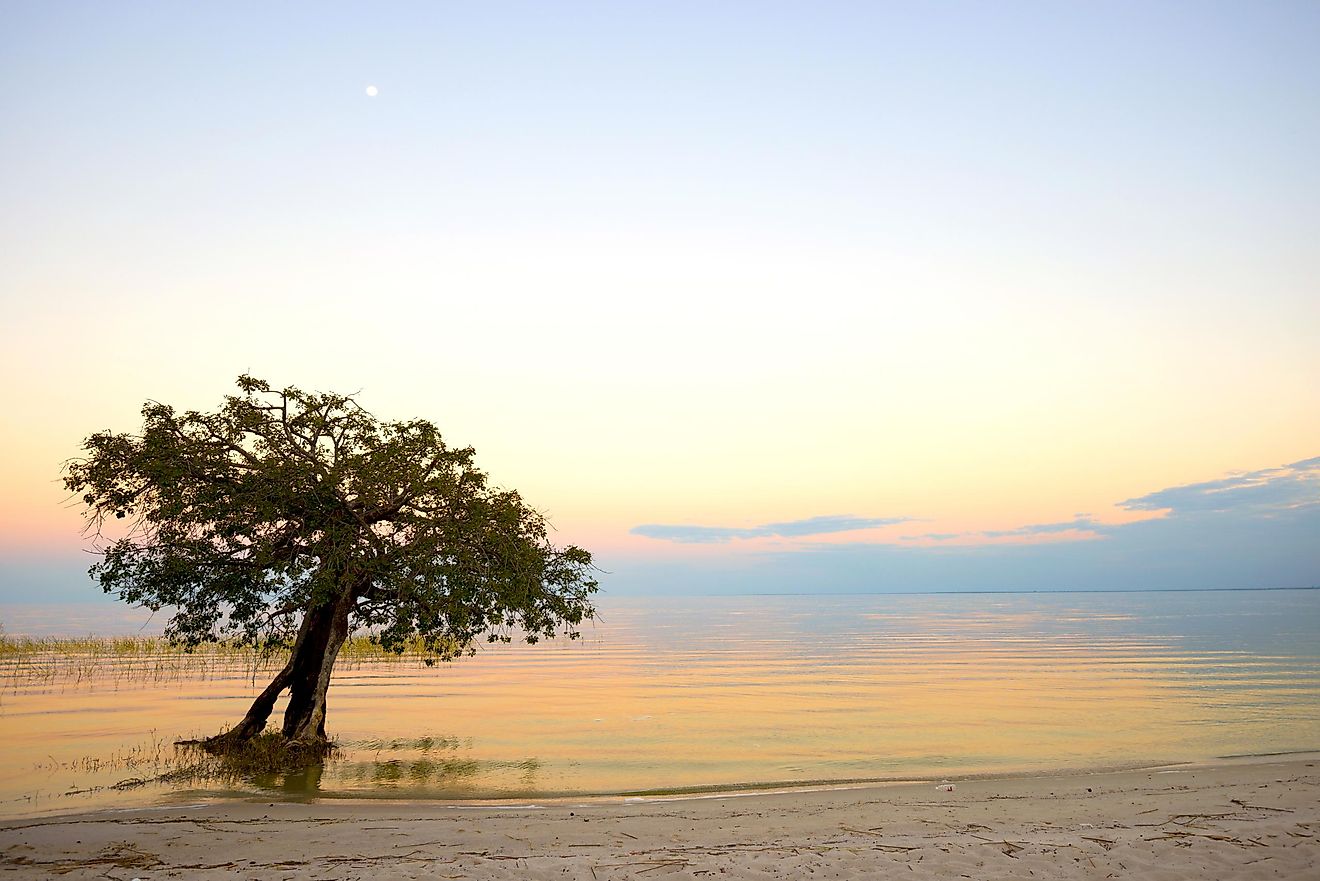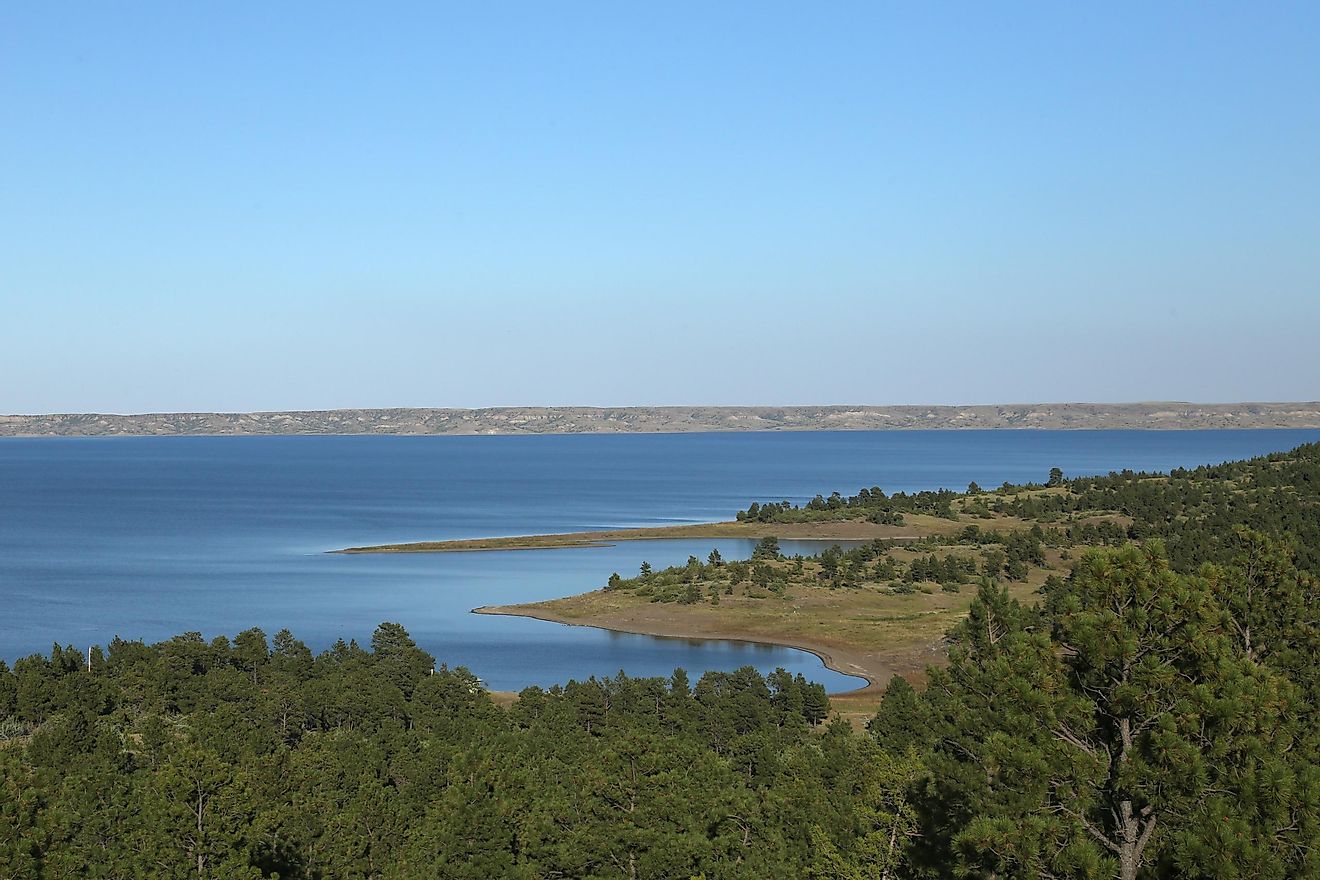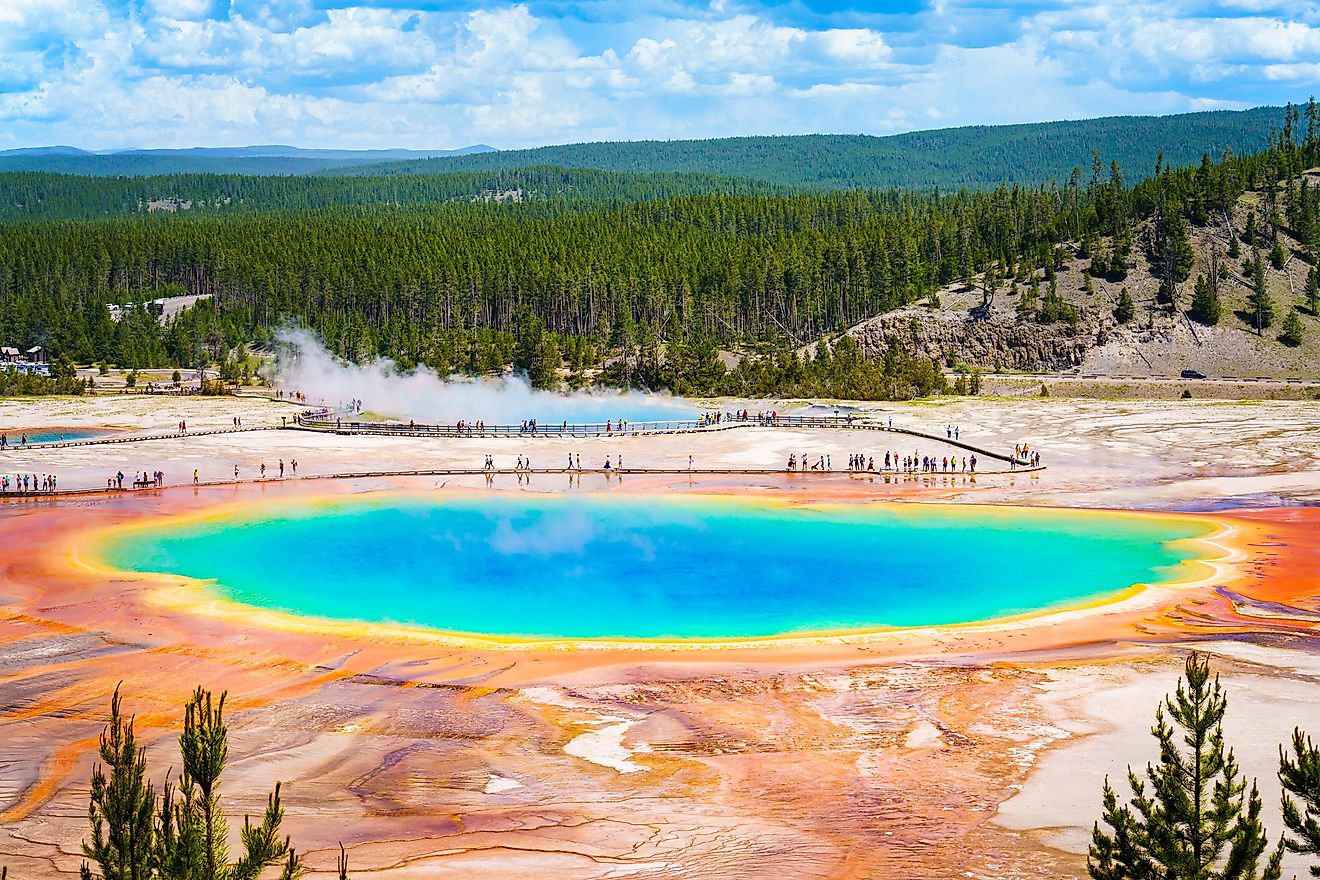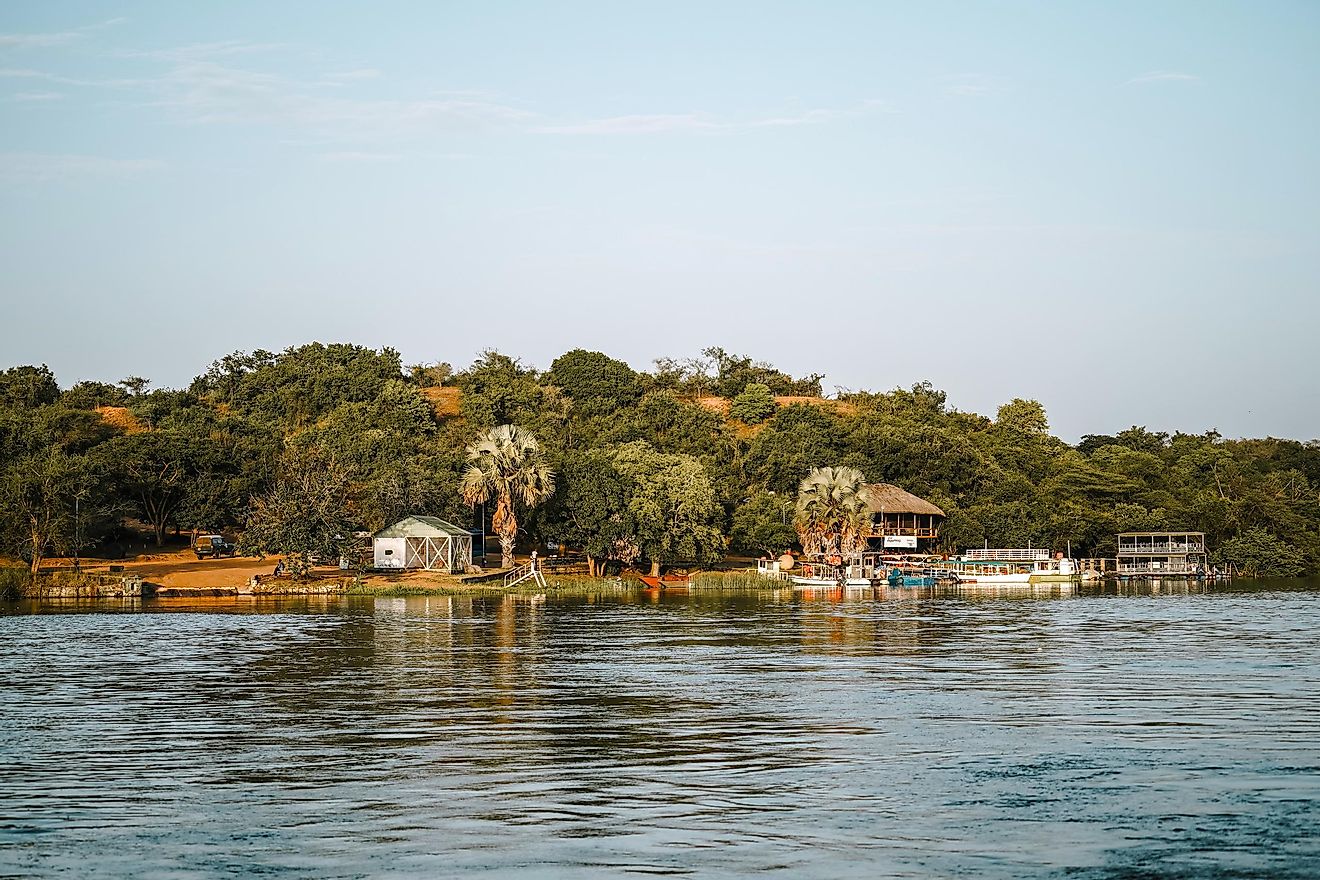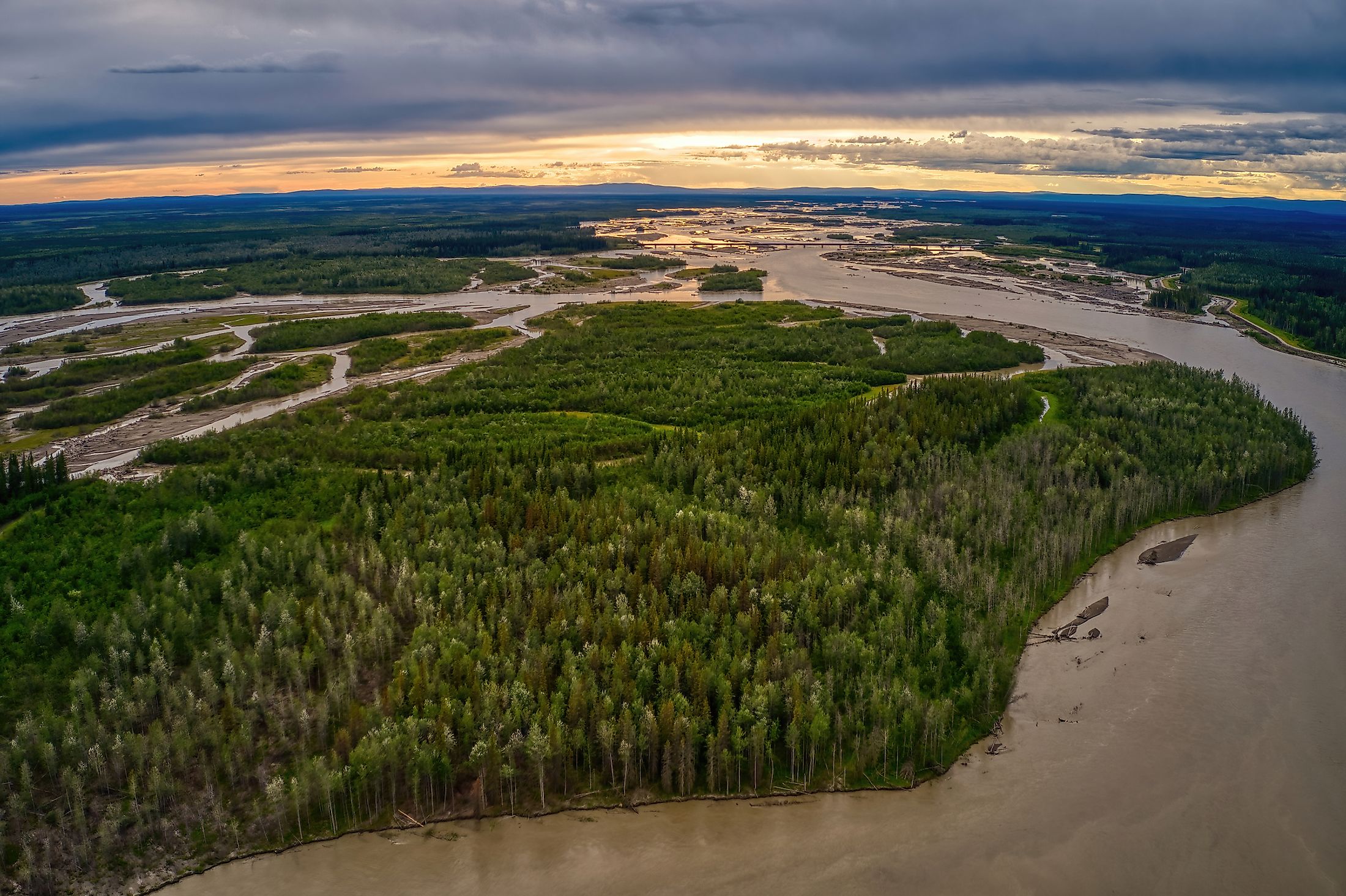
Tanana River
Holding the title of the Yukon River's second-largest tributary, the Tanana River flows for approximately 570 miles after rising from the Nabesna and Chisana rivers. The river obtains its name from the Athabascan term "tenene", which translates to "river trail."
Geography And Flow Of The Tanana River

Located in the US state of Alaska's east-central region, the Tanana River is a 584-mile-long tributary of the Yukon River. With its headwaters situated at the confluence of the Chisana and Nabesna rivers in northern Northway, the Tanana River Basin drains approximately 45,918 square miles. Thus, its headwaters are located near the Alaska-Canada border and Tok on the northern side of the Alaska Range. Moreover, the river's main stem that emerges from this confluence is actually classified as a large glacial system. The Tanana River is considered to be the second-largest tributary of the Yukon River, after the Porcupine River, thereby highlighting its significance. In fact, when combined with the White River, both rivers contribute to approximately 30% of all of the Yukon River's water flow. However, both of these rivers together make up only 20% of the greater drainage area.
In terms of its flow, the Tanana River proceeds in a direction northwest of Yukon Territory. Proceeding north-westward at the base of the Alaska Range, the river finally unites with the Yukon River near the village of Tanana. Throughout its flow, the river continues almost parallel to the Alaska Highway. As the Tanana River emerges into central Alaska, the lowland marsh region becomes known as the Tanana Valley. The river's overall flow peaks in mid-summer in July before transforming into a shallow stream by late summer. Each winter, the river accumulates a layer of ice that is a maximum of 43 inches in thickness.
Brief History Of The Tanana River And Its Economic Development
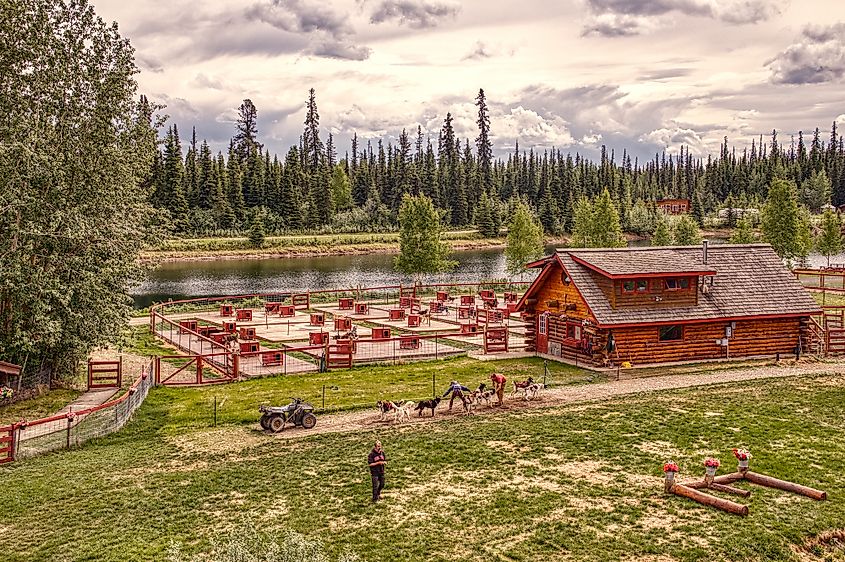
Archaeological evidence illustrates how humans have inhabited the Yukon basin region for over 12,000 years. These sites have proven that the area was previously occupied by Paleo-Arctic people, followed by the Tanana tribe, which maintained a presence in the region for an estimated 1,200 years.
In the mid-19th century, the Tanana River was first explored by Russian traders. The Tanana valley has served as one of Alaska's major economic strongholds throughout the years, given its importance during the gold rush era in 1904. The Tanana River region has also served as one of Alaska's leading farming regions, given its high yield of potatoes, small grains, and other truck crops. The Tanana Valley's commercial and distribution center is Fairbanks, which emerged in the early 21st century at the terminus of the Richardson and Alaska highways. In fact, Fairbanks was subjected to heavy flooding in 1967 when the Tanana River overflowed. Despite the flood, Fairbanks has grown to contain much of the region's human population, with an approximate population of 99,000 individuals currently.
Ecological Diversity Of The Tanana River Basin

When it comes to the Tanana River Basin's ecological diversity, the region is primarily dominated by boreal forests that include black spruce, white spruce, trembling aspen, and paper birch trees within areas made up of impermeable soils. As for areas with well-drained riparian soils, white spruce and balsam poplar tree species are commonly found. The River Basin also contains areas with permafrost that contain ericaceous shrubs and dwarf birches. Moreover, much of the groundwater produced by the Alaska Range emerges as springs and seeps from alluvial deposits. Given how sediment-laden the river basin is, the Tanana River is rich in a variety of minerals.
The Tanana River is also host to various wild and hatchery-produced fish, many of which are fished by anglers. All in all, the river hosts 18 species of fish, of which sport anglers most frequently target 6. These six fish species include Chinook and Silver salmon, burbot, Arctic grayling, Northern pike, and Lake trout. Among the species also found within the river are Rainbow trout, which are not native to the river and have instead been introduced.
Furthermore, Tanana Valley State Forest and Tetlin National Wildlife Refuge lie along the banks of the Tanana River. These two reserves host a plethora of Alaska's endemic and migratory species. Typically found within the winter months are moose, wolf, grouse, Dall sheep, wolverine, caribou, and black and grizzly bears. However, during the spring and fall months, the region is teeming with migratory birds that travel to the area to nest. Such species include tundra and trumpeter swans, warblers, Canada geese, and others.
